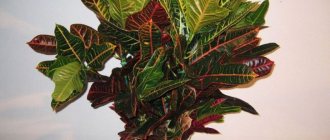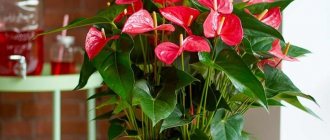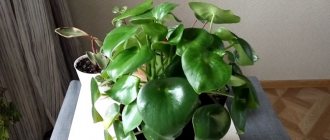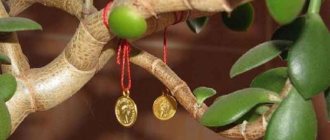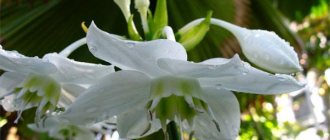The delightful beauty Clivia belongs to the Amaryllis family. Many may think that this amazing houseplant is a bulbous plant, but in fact it is not. Many plant growers say that clivia stands apart in the family, since instead of a tuber it has rather long fleshy roots that form a powerful root system.
You will be surprised, but clivia simply does not have a stem as such. Although many believe that it is simply not visible behind the voluminous sheets. They are quite hard to the touch and have a rich dark green color. The leaves, in comparison with the size of the plant itself, are long. The leaf can reach a maximum length of up to fifty centimeters. Clivia leaves grow directly from the ground, forming a false stem.
Every year, a bright representative of the Amaryllis family produces at least six new leaves. In this case, the indoor plant in no case becomes overgrown, but is gradually renewed. After all, with the formation of new leaves, a home flower necessarily sheds at least two of the oldest and most flaccid leaves. If the grower carefully monitors the process of foliage renewal, he will be surprised that the indoor flower artificially dries out and then drops several leaves.
Clivia blooms at least once a year. With excellent care, it can please the grower with repeated flowering.
It is important! Clivia blooms only if it has been provided with a period of rest for at least two to three months during the year.
To ensure the plant is in a state of rest, you need to completely stop all feeding, starting in the fall . It is also worth moving the plant to a shaded place for a while and reducing watering to a minimum. After two to three months, you can begin to slowly bring the plant out of dormancy, adding gifts and increasing watering.
Clivia blooms for twenty-five days. The indoor flower delights its owners with delightful orange, yellow and red flowers of amazing funnel shape. They are formed on a long peduncle. In just one flowering, from twelve to thirty delightful flowers can bloom!
Interesting fact! The average lifespan of clivia is 15 years. Although some specimens can live up to 40 years. It all depends on the conditions under which the indoor plant is kept.
General description of clivia
The leaves are herbaceous with a thickened base, collected in a rosette. The flowers are red, yellow or orange, arranged several times in large inflorescences. They bloom twice a year. The first flowering is in February or the first ten days of March, the second in late May-early June. The roots are thick and strong, capable of accumulating moisture and nutrients.
The plant is considered unpretentious; it can be placed on any windows in the house. Of all the varieties, Clivia miniata and Clivia nobilis are cultivated. The first is used medicinally by the Zulu as an antidote for snake bites and a remedy for fever. At the same time, experts warn that the roots of the flower are toxic due to the presence of alkaloids, so they must be used in treatment with caution.
General characteristics of the flower
Clivia stands apart in its large family. The fact is that, unlike other Amaryllis, it does not form a bulb. This is a rhizomatous plant, to the base of which the leaves are attached, collected in a dense rosette, which forms a false stem. The roots are fleshy and juicy, capable of accumulating nutrients from the soil “in reserve.”
The leaves are linear or xiphoid in shape and have the characteristic shine of dense leaves. Bell-shaped flowers are collected in an umbrella inflorescence. There are several types of domestic crops, which differ in the color of the inflorescence: from orange to bright red.
The inflorescence is formed by 2-3 dozen flowers, which bloom gradually and do not bloom immediately, delighting their owners with prolonged flowering, which lasts up to 2-3 weeks.
Clivia is capable of simultaneously producing several flower arrows, due to which its decorative qualities are significantly increased. It blooms once a year, in some cases it forms flower shoots twice, but suitable conditions must be created for this.
Important to know: Clivia owes its name to the floriculture lover Charlotte Clive, Queen Victoria's governess. And Clivia Gardena was named after Major Robert Gardena, who discovered an unusual species and brought it to Europe.
Types of clivia
Five species of clivia are found in the wild; several more have been bred from them through selection:
- Clivia miniata (cinnabar) is the most common variety; one pedicel can contain from 15 to 20 orange-red inflorescences; peak flowering is February - March.
- White - leaves are fleshy, belt-type, white bell-shaped flowers are collected in inflorescences of 20 pieces. Blooms in early spring.
- Yellow - on an elongated peduncle there are several yellow umbrella flowers, belt-shaped leaf plates, the peduncle opens in mid-spring.
All three species reach a height of 70 cm. In addition to these crops, there are also the following varieties
| Type, description | Inflorescences | Leaves | Flowering time |
| Noble - bred in the Old World back in 1828. Plant length - 30 cm. | On a half-meter peduncle there are up to 60 tubular-dropping orange inflorescences. | Ensiform dark green. | Second half of February. |
| Nobilis (nobilis) is the birthplace of the plant in the Cape Province of the Republic of South Africa. | The flower stem is thick and elastic, with several umbellate flowers of pale red color ripening at the end. | Long, rich green in color with a tapered end. | Second half of winter. |
| Gardena (gardenii) - opened in 1856 by Robert Garden. Plant height up to 50 cm. | Red-orange bell buds. | Ensiform, length varies from 40 to 90 cm. | Late autumn - early winter |
| Beautiful. | 50-60 tubular inflorescences of orange color. | The length of the crop is 30 cm. | Mid-January - early February. |
| Citrina - developed at the beginning of the 19th century. The height of the crop is 60 cm. | Delicate creamy. | Bright green, belt-shaped. | From February to March. |
| Steblevaya - year of opening 1943. | Red-orange, bell-shaped. | It forms a stem from the lower drying leaf plates, from which aerial roots appear. | Spring and summer, less often autumn. |
| Amazing - discovered in 2002. | Drooping bell-shaped inflorescences of coral-orange color. | The base is burgundy and has a white stripe down the middle. | Winter. |
| Variegated. | Blooming bells of ocher color. | Smooth belt-shaped ones are painted with a white stripe in the middle. | May June. |
| Powerful. The height reaches 2 m. | Bell flowers are collected in an umbrella brush. | Long, sword-shaped. | January. |
Beneficial features
Clivia contains lycorin and clivatin. These substances help improve the tone of the heart muscle and the functioning of the circulatory system. This plant is believed to be a source of joy and love. An externally attractive plant helps improve mood, relieve emotional stress and prevent the development of seasonal depression. The patron of clivia is the Sun, which is considered the planet of discoverers and creators. Thanks to this, the flower can inspire something new and unexpected: the discovery of new lands, the creation of a unique project, etc.
Caring for Clivia - IF I KNEW ABOUT THIS EARLIER! My flowers.
Caring for clivia at home - table by season
In order to grow a healthy and beautiful plant, you should consider the following.
| Season | Summer | Rest period | Emergence of flower stem |
| Temperature regime. | +20…+25 °C. | +12…+15 °С | .+20…+25 °C. |
| Lighting. | Natural, outdoors in partial shade. | Place on a windowsill in a northern position, shade it. | Move to western or eastern windows, maximum lighting, but direct sunlight should be avoided. |
| Watering. | Slightly, as moisture evaporates. | From once a week to once a month. | Slightly, as moisture evaporates. |
| Feeding. | Once every 14 days. | They don't. | Once every two weeks. |
| Humidity. | It doesn’t matter, the leaves are washed as the surface becomes dusty. | ||
Briefly about cultivation
- Flowering: for a month in late winter or early spring.
- Lighting: bright diffused light without direct sunlight.
- Temperature: in spring and summer – within 20-26 ºC. In autumn – 13-14 ºC, but as soon as the plant produces a peduncle, the temperature is increased to 20 ºC.
- Watering: regular and moderate. In spring and summer, water more often, in autumn and winter - less often, but as soon as a peduncle appears, watering is gradually increased.
- Air humidity: normal for residential areas, but in hot weather you can spray or wash the leaves of the plant with a damp sponge.
- Feeding: during the growing season - 2 times a month with mineral fertilizers for flowering plants and organic solutions alternately.
- Dormant period: mid to late autumn.
- Transplantation: after flowering: young clivias - annually, mature ones - once every 2-3 years. For specimens that are too large, the top layer of substrate in the pot must be changed annually.
- Substrate: 2 parts of turf soil and 1 part of peat and humus. For every three liters of substrate you need to add two tablespoons of superphosphate.
- Reproduction: seeds and offspring.
- Pests: scale insects, false scale insects, mealybugs and aphids.
- Diseases: Problems arise mainly due to improper maintenance or poor care.
Read more about growing clivia below.
Watering and fertilizing
On warm days, clivia requires regular watering. During the dormant period, it is practically not carried out or the soil is moistened extremely rarely. During flowering, abundant irrigation with water at room temperature is recommended.
Organic and mineral supplements are required for the crop in a proportion of 2 g per 2 liters of water and only during flowering. Fertilizing is indicated once every six months. They also give a minimum amount of nitrogen fertilizers, since they slow down flowering and, conversely, cause increased leaf growth.

